- Blog Categories
- Project Management
- Agile Management
- IT Service Management
- Cloud Computing
- Business Management
- Business Intelligence
- Quality Engineer
- Cyber Security
- Career
- Big Data
- Programming
- Most Popular Blogs
- PMP Exam Schedule for 2024: Check PMP Exam Date
- Top 60+ PMP Exam Questions and Answers for 2024
- PMP Cheat Sheet and PMP Formulas To Use in 2024
- What is PMP Process? A Complete List of 49 Processes of PMP
- Top 15+ Project Management Case Studies with Examples 2024
- Top Picks by Authors
- Top 170 Project Management Research Topics
- What is Effective Communication: Definition
- How to Create a Project Plan in Excel in 2024?
- PMP Certification Exam Eligibility in 2024 [A Complete Checklist]
- PMP Certification Fees - All Aspects of PMP Certification Fee
- Most Popular Blogs
- CSM vs PSM: Which Certification to Choose in 2024?
- How Much Does Scrum Master Certification Cost in 2024?
- CSPO vs PSPO Certification: What to Choose in 2024?
- 8 Best Scrum Master Certifications to Pursue in 2024
- Safe Agilist Exam: A Complete Study Guide 2024
- Top Picks by Authors
- SAFe vs Agile: Difference Between Scaled Agile and Agile
- Top 21 Scrum Best Practices for Efficient Agile Workflow
- 30 User Story Examples and Templates to Use in 2024
- State of Agile: Things You Need to Know
- Top 24 Career Benefits of a Certifed Scrum Master
- Most Popular Blogs
- ITIL Certification Cost in 2024 [Exam Fee & Other Expenses]
- Top 17 Required Skills for System Administrator in 2024
- How Effective Is Itil Certification for a Job Switch?
- IT Service Management (ITSM) Role and Responsibilities
- Top 25 Service Based Companies in India in 2024
- Top Picks by Authors
- What is Escalation Matrix & How Does It Work? [Types, Process]
- ITIL Service Operation: Phases, Functions, Best Practices
- 10 Best Facility Management Software in 2024
- What is Service Request Management in ITIL? Example, Steps, Tips
- An Introduction To ITIL® Exam
- Most Popular Blogs
- A Complete AWS Cheat Sheet: Important Topics Covered
- Top AWS Solution Architect Projects in 2024
- 15 Best Azure Certifications 2024: Which one to Choose?
- Top 22 Cloud Computing Project Ideas in 2024 [Source Code]
- How to Become an Azure Data Engineer? 2024 Roadmap
- Top Picks by Authors
- Top 40 IoT Project Ideas and Topics in 2024 [Source Code]
- The Future of AWS: Top Trends & Predictions in 2024
- AWS Solutions Architect vs AWS Developer [Key Differences]
- Top 20 Azure Data Engineering Projects in 2024 [Source Code]
- 25 Best Cloud Computing Tools in 2024
- Most Popular Blogs
- Company Analysis Report: Examples, Templates, Components
- 400 Trending Business Management Research Topics
- Business Analysis Body of Knowledge (BABOK): Guide
- ECBA Certification: Is it Worth it?
- How to Become Business Analyst in 2024? Step-by-Step
- Top Picks by Authors
- Top 20 Business Analytics Project in 2024 [With Source Code]
- ECBA Certification Cost Across Countries
- Top 9 Free Business Requirements Document (BRD) Templates
- Business Analyst Job Description in 2024 [Key Responsibility]
- Business Analysis Framework: Elements, Process, Techniques
- Most Popular Blogs
- Best Career options after BA [2024]
- Top Career Options after BCom to Know in 2024
- Top 10 Power Bi Books of 2024 [Beginners to Experienced]
- Power BI Skills in Demand: How to Stand Out in the Job Market
- Top 15 Power BI Project Ideas
- Top Picks by Authors
- 10 Limitations of Power BI: You Must Know in 2024
- Top 45 Career Options After BBA in 2024 [With Salary]
- Top Power BI Dashboard Templates of 2024
- What is Power BI Used For - Practical Applications Of Power BI
- SSRS Vs Power BI - What are the Key Differences?
- Most Popular Blogs
- Data Collection Plan For Six Sigma: How to Create One?
- Quality Engineer Resume for 2024 [Examples + Tips]
- 20 Best Quality Management Certifications That Pay Well in 2024
- Six Sigma in Operations Management [A Brief Introduction]
- Top Picks by Authors
- Six Sigma Green Belt vs PMP: What's the Difference
- Quality Management: Definition, Importance, Components
- Adding Green Belt Certifications to Your Resume
- Six Sigma Green Belt in Healthcare: Concepts, Benefits and Examples
- Most Popular Blogs
- Latest CISSP Exam Dumps of 2024 [Free CISSP Dumps]
- CISSP vs Security+ Certifications: Which is Best in 2024?
- Best CISSP Study Guides for 2024 + CISSP Study Plan
- How to Become an Ethical Hacker in 2024?
- Top Picks by Authors
- CISSP vs Master's Degree: Which One to Choose in 2024?
- CISSP Endorsement Process: Requirements & Example
- OSCP vs CISSP | Top Cybersecurity Certifications
- How to Pass the CISSP Exam on Your 1st Attempt in 2024?
- Most Popular Blogs
- Best Career options after BA [2024]
- Top Picks by Authors
- Top Career Options & Courses After 12th Commerce in 2024
- Recommended Blogs
- 30 Best Answers for Your 'Reason for Job Change' in 2024
- Recommended Blogs
- Time Management Skills: How it Affects your Career
- Most Popular Blogs
- Top 28 Big Data Companies to Know in 2024
- Top Picks by Authors
- Top Big Data Tools You Need to Know in 2024
- Most Popular Blogs
- Web Development Using PHP And MySQL
- Top Picks by Authors
- Top 30 Software Engineering Projects in 2024 [Source Code]
- More
- Tutorials
- Practise Tests
- Interview Questions
- Free Courses
- Agile & PMP Practice Tests
- Agile Testing
- Agile Scrum Practice Exam
- CAPM Practice Test
- PRINCE2 Foundation Exam
- PMP Practice Exam
- Cloud Related Practice Test
- Azure Infrastructure Solutions
- AWS Solutions Architect
- AWS Developer Associate
- IT Related Pratice Test
- ITIL Practice Test
- Devops Practice Test
- TOGAF® Practice Test
- Other Practice Test
- Oracle Primavera P6 V8
- MS Project Practice Test
- Project Management & Agile
- Project Management Interview Questions
- Release Train Engineer Interview Questions
- Agile Coach Interview Questions
- Scrum Interview Questions
- IT Project Manager Interview Questions
- Cloud & Data
- Azure Databricks Interview Questions
- AWS architect Interview Questions
- Cloud Computing Interview Questions
- AWS Interview Questions
- Kubernetes Interview Questions
- Web Development
- CSS3 Free Course with Certificates
- Basics of Spring Core and MVC
- Javascript Free Course with Certificate
- React Free Course with Certificate
- Node JS Free Certification Course
- Data Science
- Python Machine Learning Course
- Python for Data Science Free Course
- NLP Free Course with Certificate
- Data Analysis Using SQL
- Home
- Blog
- Project Management
- Benefits and Evolution of Project Management Methodologies
Benefits and Evolution of Project Management Methodologies
Updated on Jul 09, 2018 | 9 min read | 8.7k views
Share:
Over several decades, projects have been initiated or undertaken due to market demands, business needs, at the behest of customer request, technological advancements and to comply with regulatory requirements. As enterprises approach some degree of maturity in managing projects, it becomes necessary for streamlining and standardizing the way these projects are executed, be it product development or providing services.
Multiple project management methodologies were followed and in fact, newer methods have evolved lately and have been adopted by organizations depending on the degree of cultural challenges and resistance exhibited by the people. We will look at some of the key project management methods followed in today’s world. Learn more about project management concepts and take your career to the next level with the help of our professional course in project management.
Know more about the project description.
Benefits & Evolution of Project Management Methodologies
Explore the evolution and benefits of project management methodologies. Learn how these methodologies have evolved over time and discover the advantages they offer in ensuring successful project execution, improved efficiency, and effective team collaboration.
1. Waterfall
Master Right Skills & Boost Your Career
Avail your free 1:1 mentorship session
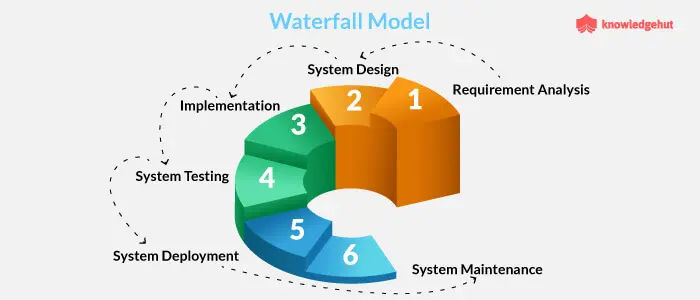
The first formal description of the Waterfall model is often cited as early as 1970 in an article by Winston W. Royce, although he did not use the term Waterfall in that article. It was the first process model to be introduced and is simple and easy to understand. Waterfall method has seen an abundant usage in projects where the needs or requirements are well understood and do not change much over time. It follows a linear development by phases with clearly defined stage gates and review processes. Each of the phases is cascaded down and will start when the defined goals are met by the previous phase and signed off.
The phases are:
- Requirement Analysis: User requirements are gathered through workshops, elicitations and business rules, schemas are defined
- System Design: Blueprint of the system is charted.
- Implementation: Developing the actual product or software happens
- System Testing: Proving that the software works through unit/integration testing and fixing defects that come out of it.
- System Implementation: Productionizing the software
- Maintenance: Operation, maintenance of the production software.
The main advantage of this model is, it allows for segmenting the work like departments and managing them easily. This model also faced some major criticisms which even led Royce to change his view towards Waterfall. It is less costly to change requirements during the design stage and it is more expensive to adapt to changes when construction has already started. This method does not also provide a working version software to client till production and there is no provision to improvise design of the system midway as there is no feedback mechanism.
The Waterfall methods can be adopted on a fixed scope and fixed pricing contracts where the clients don’t expect the requirements to change frequently over time. It would also be beneficial if the project team is also experienced in this type of plan-driven heavy-weight approach to deliver quality products. The performance of the project is measured based on the delivery date and the budget utilized.
2. Agile
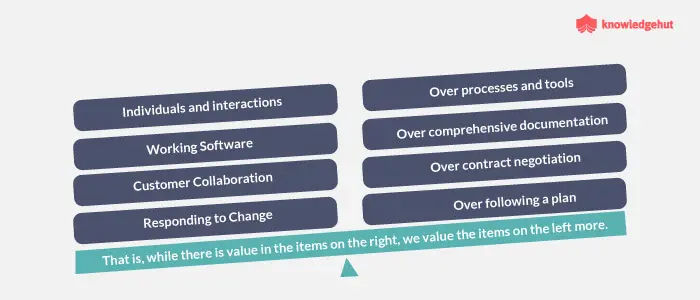
In 2001, a lot of practitioners using Extreme Programming, SCRUM, DSDM, Adaptive Software Development, Crystal and Feature-Driven Development convened in Utah ski resort and were sympathetic to the need for an alternative to documentation-driven, heavyweight software development processes. As a result, “Agile Manifesto” was signed paving way for Agile Software Development. It is an umbrella term for several iterative and incremental development and some of the popular include Scrum, XP, Crystal, DSDM, FDD, and Lean.
"Walking on water and developing software from a specification are easy if both are frozen."
- Edward V. Berard
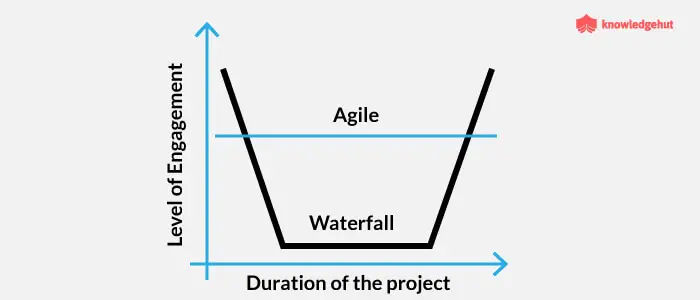
The fundamental difference between Waterfall and Agile is that Waterfall delivers product increment at the end of the project but Agile emphasis on delivering smaller increments more frequently through multiple iterations. Agile harnesses customer’s competitive advantage and proposes process that accounts changes even late in the game. This is achieved through adaptive planning and evolutionary design. The client is also involved throughout the development process unlike Waterfall method and feedback is received in every iteration through a feedback loop and the product is improvised based on the feedback. But can all projects be executed in Agile? The answer is no, as each project is unique and if the scope of the projects is clear like still water and does not change over time, executing those projects in Agile would be an overkill.
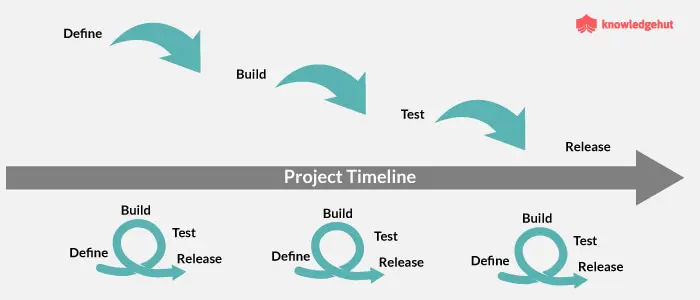
The most common Agile methodologies that are widely used and gained popularity are Scrum and Extreme Programming. Scrum focuses on shorter iterations called Sprints ranging (generally) 2 weeks to 1 month and emphasis on delivering shippable product increments every sprint. In Scrum, design is emergent and evolves over a period of time. The Scrum framework consists of Product Owner, Scrum Master and Development Team.Product Owner: - Responsible for the product vision and building the product right. A good product owner should prioritize requirements and is empowered to make decisions about the product.
- Scrum Master: Serves as servant leader, helping team members work together cohesively, removing impediments to progress, facilitating meetings and discussions.
- Team: Cross-functional and responsible for who will work on which tasks, which engineering practices to be followed necessarily to achieve project goals.
3. Extreme Programming
Extreme Programming created by Kent Beck also advocates frequent releases in shorter development lifecycles. The most common elements of XP are pair programming, code review, test-first development, continuous, collective code ownership, metaphor, coding standards, refactoring, simple design, and frequent customer collaboration. The idea is based on the benefits of traditional software engineering practices when taken to extreme levels. Sometimes Scrum will also employ some of the engineering practices from XP like refactoring, simple design, TDD etc.
Agile harnesses customer’s competitive advantage by welcoming requirement even late in the development. The Agile methodologies will be most suitable for time and materials contract where the time and cost are fixed but the scope changes frequently based on customer needs. The performance of the Agile projects is measured based on the value delivered to the customer.
4. Kanban
The Kanban methodology (originated from Toyota Production System) as formulated by David J. Anderson is also incremental and evolutionary like the Agile methodology and recommends system changes for organizations to function optimally. Kanban mainly focuses on delivering continuous flow of value to the clients and it accomplishes it by placing constraints on the system.
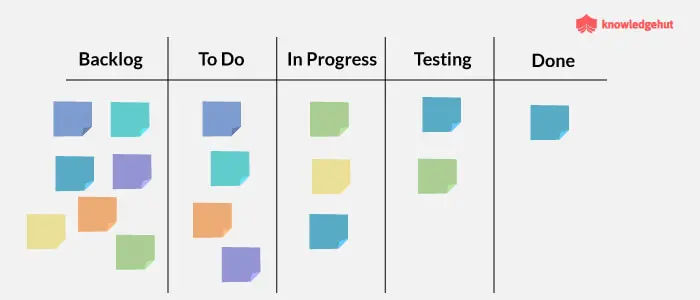
It is based on below core principles,
- Visualize the workflow: Ability to see all the work items of each other
- Limit WIP: Balances the flow of work items on each lane to generate optimal output
- Manage the flow: Pull the items from backlog (instead of push) when each work item is finished thereby enhancing the flow of values quickly.
- Make process explicit: Clearly define the process and socialize with the team.
- Feedback loops: Encourages standup meetings (10-15 minutes), reviews to incorporate feedbacks
- Improve collaboration: Teams achieve continuous delivery through shared knowledge and collective understanding.
Kanban is more useful when the priorities changes frequently and it also balances demand against the throughput (cycle time and lead time) which guarantees the most valued features are being delivered to the client. Similar to any of the Agile methods, this method is highly responsive to changes. It also maximizes the amount of work not being done by eliminating waste and activities that don’t add value. Scrum doesn’t allow changes mid-way during the sprint, but Kanban can help in adding or removing backlog items any time during the project and helps in continuous delivery.
Kanban is used widely when there is a continuous stream of work and tackling a small number of tasks fluidly and concurrently. It is also suitable for time and materials contract similar to Scrum Framework.
Top Cities where Knowledgehut Conduct Project Management Certification Training Course Online
Looking to become an expert in PRINCE2 project management methodology? Our online course about PRINCE2 will guide you towards mastery in project management. Take your skills to the next level and enroll today to gain in-depth knowledge and practical skills in PRINCE2 methodology!
Conclusion
There are many more project management methodologies followed in the industry and each project may demand specific methods to be successful. Now hybrid models are getting evolved like a mixture of Waterfall and Agile that gives the flexibility to pivot and use the best methods for a specific aspect of the project. Regardless of what method has been employed to successfully complete the project, there is also going to be a need of tools as well along with process models that are flexible enough to allow to collaborate across the enterprise and deliver projects.
Get Free Consultation
By submitting, I accept the T&C and
Privacy Policy


